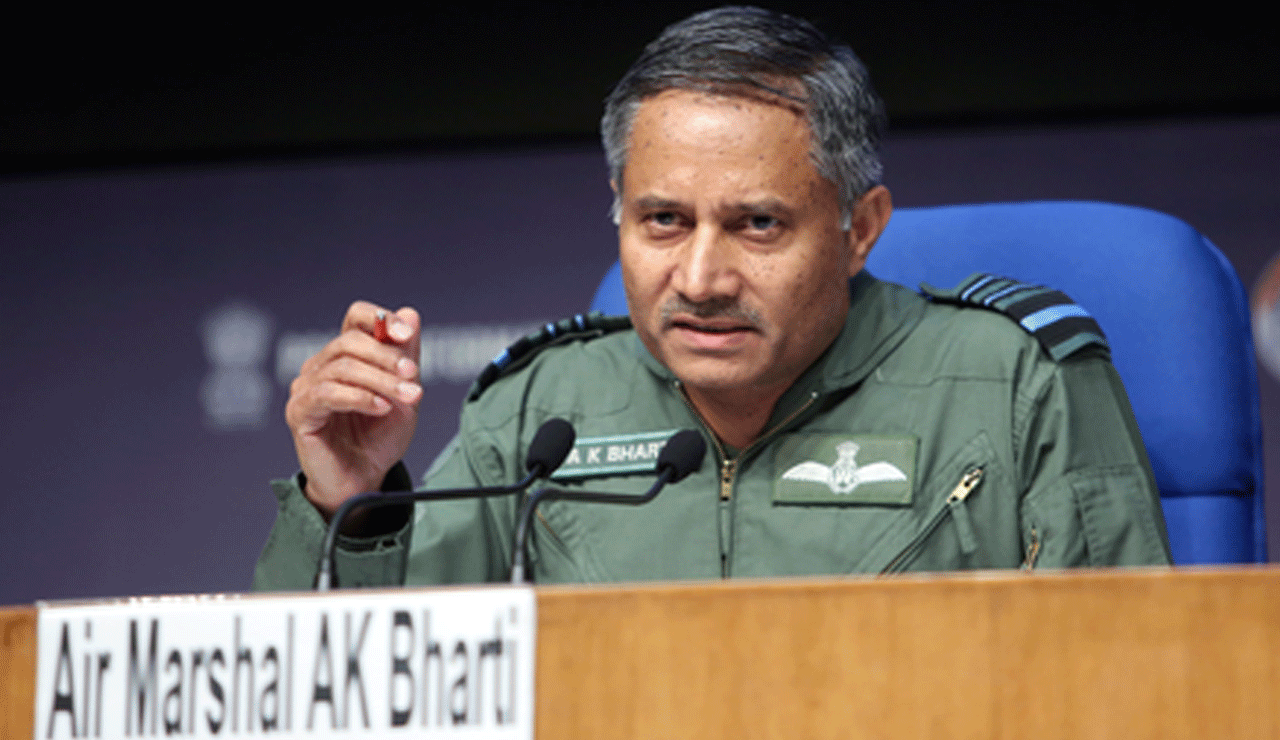Operation Sindoor: Air Marshal Recites ‘Bhay Binu Hoy Na Preeti’ from Sundar Kand, Issues Strong Message to Pakistan
In a comprehensive briefing, Air Marshal A.K. Bharti, Director General of Air Operations, provided a detailed account of India’s robust air defence and offensive capabilities during Operation Sindoor, launched in response to the April 22 terror attack in Pahalgam.

New Delhi: In a comprehensive briefing, Air Marshal A.K. Bharti, Director General of Air Operations, provided a detailed account of India’s robust air defence and offensive capabilities during Operation Sindoor, launched in response to the April 22 terror attack in Pahalgam.
Table of Contents
India’s Firm and Impressive Air Defence Posture
Air Marshal Bharti described India’s air defence posture as “firm and impenetrable.” In a press conference on Monday, he outlined the coordinated deployment of assets from the Indian Air Force, Army, and Navy. The three services worked in tandem, integrating their systems into a multi-layered grid that successfully neutralised a range of incoming threats, including drones, missiles, and loitering munitions.
Also Read: Watch: Newlyweds Perform Dangerous Stunts on Moving Car – Here’s What Happened Next
A Message to Pakistan: Ramayana’s Wisdom in Modern Warfare
Drawing from ancient wisdom, Bharti invoked a line from the Ramcharitmanas to underline the philosophical basis of India’s response. “Vinay na maanat jaladhi jaḍ, gaye teen din beet. Bole Ram sakop tab, bhay binu hoye na preet.” (When humility does not work with the obstinate, and days pass without resolution, then one must act with firmness. Fear becomes necessary to foster respect and peace.)
By quoting Lord Ram’s decision to confront the ocean god in the Ramayana, Bharti reinforced India’s doctrine of calibrated, restrained force when dealing with intransigence and provocation.
Stellar Performance of Indigenous Air Defence Systems
Air Marshal Bharti highlighted the stellar performance of India’s indigenous air defence system, particularly the Akash system. “Our battle-proven systems stood the test of time and took them head-on,” he noted. He further explained that India’s air defence capabilities had been strengthened due to policy and budgetary support from the Indian government over the last decade.
Multi-Layered Air Defence Grid: Defending Against Advanced Threats
India’s air defence grid, as explained by Bharti, consists of a combination of low-level guns, man-portable shoulder-fired systems for point defence, fighter aircraft, and long-range missile systems that cover higher altitudes and greater distances. These systems successfully neutralised multiple Pakistani drones and UAVs using both soft-kill (jamming) and hard-kill (kinetic) counter-UAS technologies.
The Indian Air Force (IAF) also countered advanced threats such as Chinese-origin PL-15 long-range air-to-air missiles and Turkish-origin Yiha loitering munitions. Visual evidence of quadcopters being shot down by India’s air defence systems was shared during the briefing.
Precision Strikes on Pakistani Airbases
In a significant update, Air Marshal Bharti confirmed that India launched precision strikes across various locations in Pakistan, including two major Pakistani airbases:
- Nur Khan Air Base: Video footage confirmed precision targeting of this facility.
- Rahimyar Khan Air Base: Satellite imagery showed craters on the runway, temporarily making it inoperable.
These strikes were part of India’s broader doctrine of targeting key military infrastructure in Pakistan as a means of deterring future cross-border aggression. The goal was to deliver a strong message without escalating the conflict to a full-scale war.
A New Strategic Shift: India’s Deterrence Posture
India’s political and military leadership emphasized that Operation Sindoor is not an isolated action but part of a strategic shift in its deterrence posture. Through these precision strikes and by showcasing its multi-domain defence capabilities, India has signalled a new normal to its adversaries, demonstrating its readiness to respond effectively to provocations.
Countering Pakistan’s Advanced Warfare Tactics
Pakistan’s repeated use of drones, missiles, and loitering munitions — many of foreign origin — was effectively countered by India’s technologically superior air defence systems. This response reinforced India’s edge in defensive capabilities, particularly in countering such asymmetric warfare tactics.
Future Responses and Vigilance
Air Marshal Bharti reiterated that the Indian Air Force remains on high alert. He made it clear that any future violations or provocations would not go unanswered, signalling India’s commitment to protecting its sovereignty and deterring any further threats.
